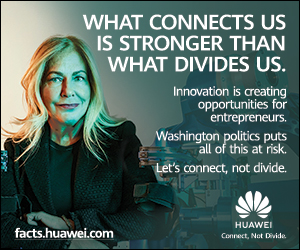The fight for gender equality is an ongoing battle despite the tremendous progress made in the past few decades. The world's finest female athletes lag behind their male counterparts in terms of earnings. Indeed, there is as much a gender pay gap in sports as there is in corporate America, and the discrepancy is glaring and unfair.
Basketball
In basketball, the pay gap between the NBA first pick and the WNBA first pick is huge. DeAndre Ayton will earn $5,091,500 next season in comparison to A'ja Wilson, who will earn a little over $50,000. This disparity means that a player who led her team to the championship last year and to the championship game this year will make 100% less than a male player.
For the 2018 season, WNBA players will make, on average, somewhere around $79,000 with veterans who have been in the league for at least six years and are eligible for a maximum salary of $115,500. In contrast, the average starting salary of NBA players is upwards of $500,000 with two of its best players—Steph Curry and LeBron James—both earning well over $32 million a year or roughly $2.6 million a month. In short, even the "worst" players in the NBA earn considerably more than the WNBA's best.
 Tennis
Tennis
Tennis has been hailed as a leader in gender equality among major sports, and the numbers seem to show that—at least when it comes to the four Grand Slam tournaments and a handful of high-profile events. There is no pay gap in these competitions. The female players get the same prize money as their male counterparts. Both Rafael Nadal and Sloane Stephens, for instance, received $3.7 million for winning last year's U.S. Open while
Roger Federer and Serena Williams both took home $4 million as Australian Open champions.
Gender equality, right?
Well, not exactly. Dig a little deeper, and the truth emerges.
The New York Times reports female tennis players earn 80 cents for each dollar earned by male players, and this discrepancy "matches the general pay gap in American workplaces." This gap translates to a difference of roughly $120,624 in total earnings.
This difference means the 15th ranked male player in the world, on average, makes $120,624 more compared to a female player with the same ranking. There is still a disparity. Thankfully for female tennis players, the discrepancy is not as glaring as in the case of the WNBA and the NBA, or United States (and global) soccer.
Soccer
Two of the world's highest-earning sports stars ply their trade on the soccer pitch with
Ladbrokes revealing Cristiano Ronaldo and Lionel Messi earn $94 million and $81 million, respectively. Ronaldo and Messi deserve every penny, of course, as they are arguably two of best, most successful players to ever play soccer.
However, if we use that pay-for-performance argument, it is clear that the United States Women's National Team is grossly underpaid. They have far outperformed their male counterparts and have the hardware to prove it (four Olympic Gold medals and three World Cups).
Even more glaring is that while female players receive higher base salaries for playing in their league than men ($72,000), they get less of everything else
according to The Atlantic. Male players receive bonuses for simply showing up for a game, while women get a game bonus only after playing in 20 friendlies.
The gap widens in international competitions where male players are awarded over $50,000 when they make the World Cup roster on top of a $75 daily allowance while female players are "rewarded" only $15,000 and a $60 daily allowance.
This pay discrepancy can, of course, be attributed to the laughably egregious gender pay gap that, for so long, has been sanctioned by FIFA—the sport's governing body. In the 2014 FIFA World Cup, losing in round 16 meant a $9 million bonus for the losing team. By comparison, the United States women's team that won the 2015 FIFA World Cup got $2 million for their efforts.
Male Athletes = Female Athletes
Tennis, as discussed previously, has been a leader in gender equality, as it is only in tennis where the women earn as much as the men—at least in Grand Slams and high-profile events. Athletics are making serious ground as well, with the International Amateur Athletic Federation World Championships offering financial rewards that are "gender-blind."
These gender-blind athletic events are legitimate, feel-good stories in the battle for gender equality, but there remains a caveat nonetheless: a stark pay gap still exists beyond these prestigious competitions.
Still, progress is being made, and that is always a good thing. There is a handful of times when Serena Williams can make just as much money as Roger Federer or when Tori Brown can earn the same prize winnings as Tyson Gay.
Last year, Williams wrote a passionate essay on the gender pay gap in America—both in tennis and in other industries. Her advice to women was to speak out for equal pay and be fearless.
An Uphill Climb
Several factors contribute to this gender pay gap in sports. These include sexism, mismatched media coverage, and most disconcerting, the lack of women holding governing positions in sports organizations. With no significant change being made to ensure equality in pay and representation, female athletes will remain on the short end of the pay scale for the foreseeable future.
All Too Common
These pay discrepancies are clearly commonplace in the world of sports, and this reality is but a microcosm of the bigger problem of gender inequality. This problem, unfortunately, is continuing to persist, and it can be best addressed if everyone involved—the players themselves (both men and women), the fans, the media, the sponsors, and the governing organizations—push for change.
Until then, the WNBA's A'ja Wilson will be earning in a season what DeAndre Ayton will be making in a month, and the United States Women's National Soccer Team combined will make significantly less than either Messi or Ronaldo.
Andrea Casper is a fitness professional with over six years experience. Alongside her passions for health and wellness is her drive to improve equality in the sports and fitness industry. She hopes that her work will bring increased awareness to issues surrounding equality. In her spare time, she runs ultra marathons.

Opinions expressed by the author are not necessarily those of WITI.
Are you interested in boosting your career, personal development, networking, and giving back? If so, WITI is the place for you! Become a WITI Member and receive exclusive access to attend our WITI members-only events, webinars, online coaching circles, find mentorship opportunities (become a mentor; find a mentor), and more!
Founded in 1989, WITI (Women in Technology International) is committed to empowering innovators, inspiring future generations and building inclusive cultures, worldwide. WITI is redefining the way women and men collaborate to drive innovation and business growth and is helping corporate partners create and foster gender inclusive cultures. A leading authority of women in technology and business, WITI has been advocating and recognizing women's contributions in the industry for more than 30 years.
The organization delivers leading edge programs and platforms for individuals and companies -- designed to empower professionals, boost competitiveness and cultivate partnerships, globally. WITI’s ecosystem includes more than a million professionals, 60 networks and 300 partners, worldwide.
WITI's Mission
Empower Innovators.
Inspire Future Generations.
Build Inclusive Cultures.
As Part of That Mission WITI Is Committed to
Building Your Network.
Building Your Brand.
Advancing Your Career.



Comments